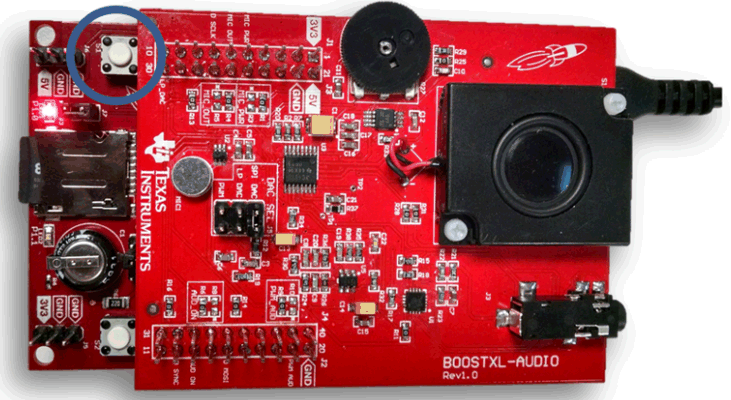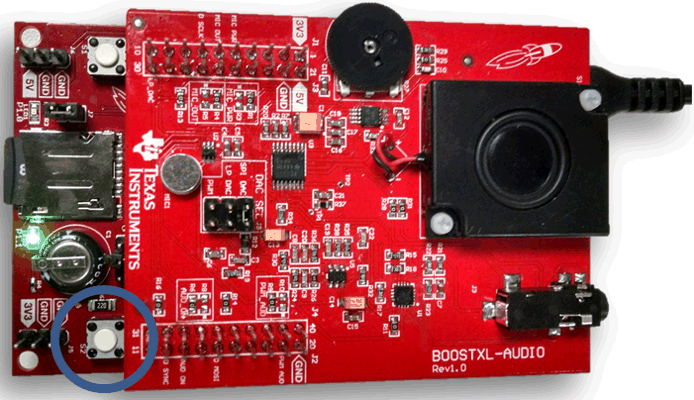SLAU678C March 2016 – November 2022
- Abstract
- Trademarks
- 1Getting Started
- 2Hardware
- 3Software Examples
- 4Resources
- 5FAQ
- 6Schematics
- 7Revision History
3.3.2 Operation
This demo uses the built-in ADC12 on the MSP430FR5994 MCU to sample from the output of the analog microphone on the Audio Signal Processing BoosterPack plug-in module. Using direct memory access (DMA), the 12-bit microphone data is stored and retrieved from FRAM memory. During playback, the microphone data is sent through SPI to the onboard DAC to drive the audio output of the onboard speaker or headphones.
To begin recording an audio sample, press switch S1 on the MSP-EXP430FR5994 (see Figure 3-4). LED1 turns on while audio is being recorded and turns off when the recording phase is complete. Headphones with an inline microphone can be used to record audio. The BoosterPack plug-in module automatically detects the inline microphone when the headphones are plugged into the provided jack (J6) and records from it instead of the onboard microphone.
 Figure 3-4 Record
Figure 3-4 RecordTo play back the recorded audio sample, press switch S2 on the MSP-EXP430FR5994 LaunchPad development kit (see Figure 3-5). LED2 turns on during playback and turns off when the playback phase is complete. To use headphones to listen to the audio playback, plug headphones into the provided jack J6.
 Figure 3-5 Playback
Figure 3-5 Playback